New Bern, North Carolina – 1861-1865
Posted By Norman Gasbarro on May 6, 2012
BATTLE OF NEW BERN. The victory of Union General Ambrose Burnside here on March 14, 1862, caused the fall of New Bern.
The historical marker shown above is located near New Bern, North Carolina. After the battle in 1862, New Bern remained under the control of Union forces for the remainder of the war and was the discharge point for many Pennsylvania regiments and companies when the war ended. New Bern was also the site where many war refugees, particularly African Americans, fled to before their re-location. And, it was the a transfer point for prisoners of war, Union and Confederate – where during the war Confederates were sent north to Union camps and where paroled and freed Union prisoners were sent home. Finding the actual historical locations of some of these events poses a challenge to the tourist, although there are efforts to commemorate the 150th anniversary of the Civil War through such programs as “North Carolina Civil War Trails.”
The above view is of early morning in the area around New Bern, North Carolina, a few days before the 150th anniversary of the battle, March 2012. Looking east toward the rising sun from the North Carolina coastal area, there is, as there must have have been 150 years ago, the promise of a new day for thousands of soldiers and refugees.
Today, Tyron Palace is the major tourist attraction in New Bern and the city is marketed as a Revolutionary War site more so than a Civil War site. This is the only original building remaining of the Tyron Palace (above) , home of North Carolina’s governor when New Bern was its capital. During the Civil War years, it was the only building that remained standing amid the rubble of a fire which occurred well prior to the war. The fire had destroyed all remnants of the other palace buildings. Today, the palace is reconstructed much as it looked in colonial days, so the site bears little resemblance to what would have been seen by occupying Union soldiers.
North Carolina Civil War Trails offers a history of North Carolina’s role in the Civil War, but there is little in the brochure that is specific to the role played by New Bern during the war. However, the brochure is worth having as a souvenir of the Civil War Sesquicentennial and as a general guide to North Carolina in the Civil War.
To download the North Carolina Civil War Trails brochure, click here, page down to the picture of the brochure and click download.
The brochure has many excellent maps that will help locate the more than 750 sites of Civil War events that took place in North Carolina. The brochure is also generally available in print form at Tourist Information Centers in the area. The above cut is of the area around New Bern and the cut below is of New Bern itself with prominent sites noted.
Tourists can easily bike or walk through New Bern. Follow the “Civil War Trails” signs. There are some specific historical markers that relate to the Civil War, one of which is shown below.
ATTMORE-OLIVER HOUSE
Under the Stars and Bars
Like many other North Carolinians, New Bern’s residents enjoyed close economic and family ties with the North and were reluctant to leave the Union. Once the war began, however, many North Carolinians passionately supported the Confederate cause. 125,000 bore arms for the Confederacy and 40,000 died. No other Southern state provided as many fighting men or suffered so many deaths.
The men who lived here in the Attmore-Oliver House which Hannah Attmore-Oliver inherited just before the war, joined other residents under the “Stars and Bars.” William Oliver, Hannah’s husband, served as a Confederate quartermaster. Her three brothers also enlisted in the Confederate army. The oldest, Sitgreaves, [Sitgreaves Attmore] of the Washington Grays, was captured with his artillery at the Battle of Fort Fisher in 1865, and died of chronic dysentery on May 22. Isaac Attmore, of the Beauford Rifles, fought in many major battles, including Gettysburg, and was killed at Spotsylvania Court House on May 12, 1864. George [George Attmore], the youngest at 13 when the war began, served in Manly’s Battery at Gettysburg, Spotsylvania Court House, The Wilderness, Cold Harbor, and Petersburg. He was at Appomattox Court House when Robert E. Lee capitulated, but his company left for North Carolina without surrendering. Attmore was pardoned at Greensboro on May 9, 1865, and returned to New Bern.
The New Bern Historical Society’s Attmore-Oliver House Museum contains a collection of Civil War artifacts assembled by the local chapter of the United Daughters of the Confederacy. For many years, one of Hannah Oliver’s daughters, Mary Oliver, was chapter president.
Undoubtedly, the Civil War era buildings that exist to this day in New Bern were seen by the men of Company G, 103rd Pennsylvania Infantry, as they were discharged from military service and embarked on their way home to the Lykens Valley. Perhaps they even came into contact with Hannah Oliver, who in her grief over the loss of her two brothers, was residing in New Bern during the occupation.
Some other buildings from the Civil War era that remain standing in New Bern today are shown below:
 ;
;
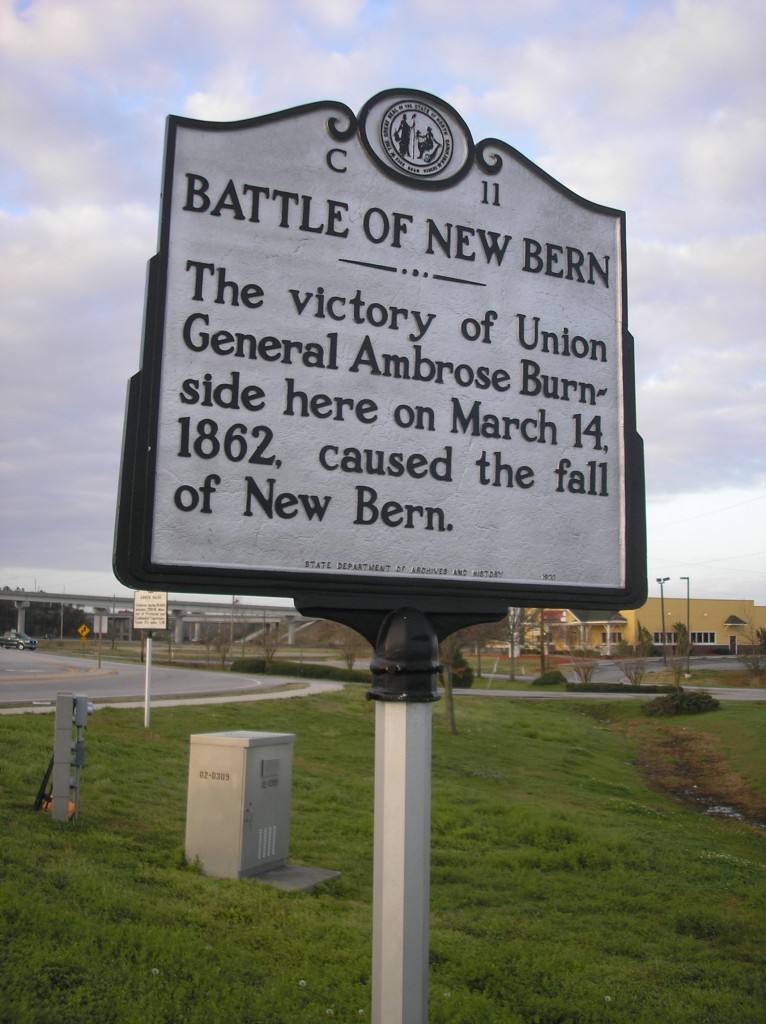
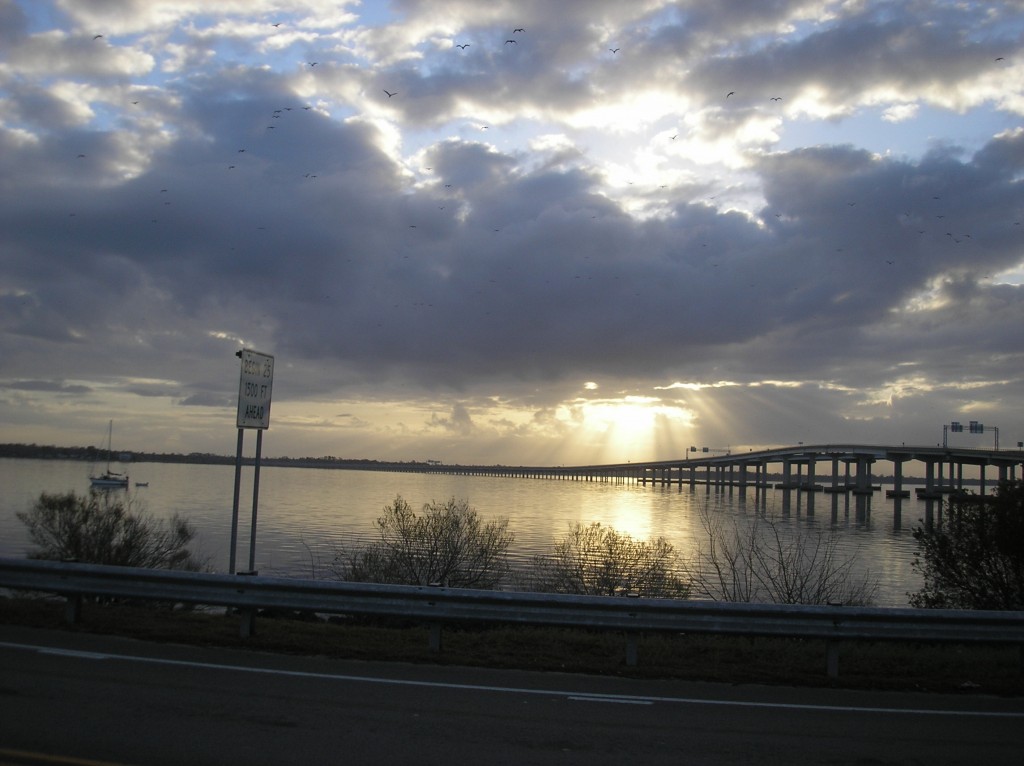
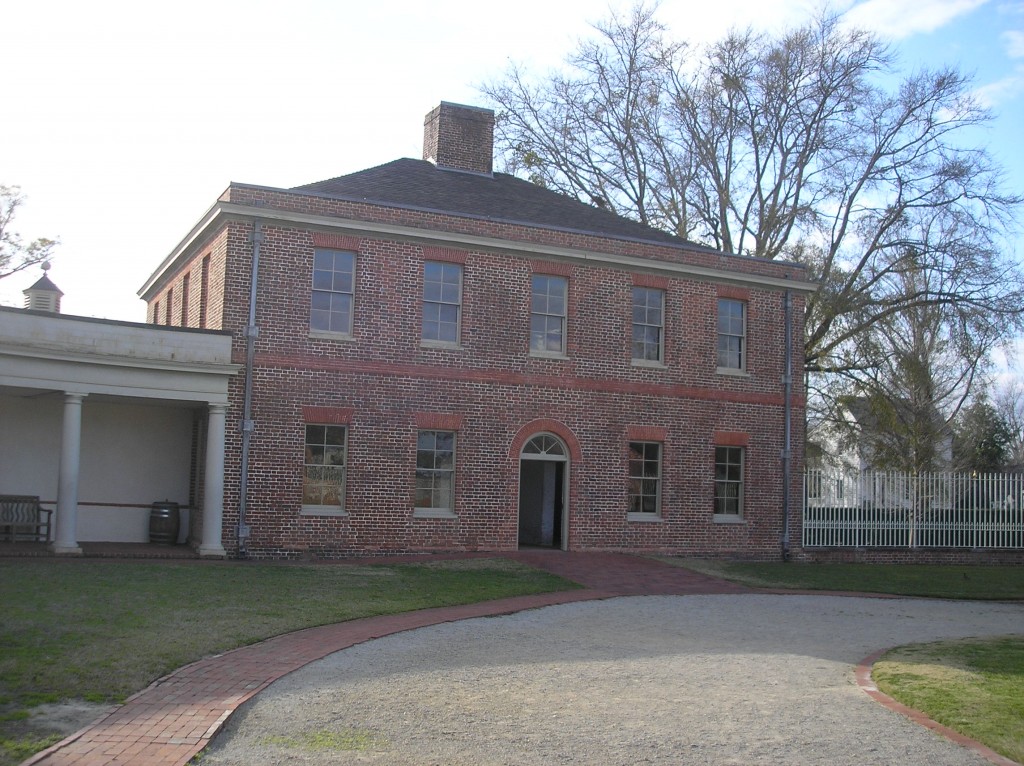

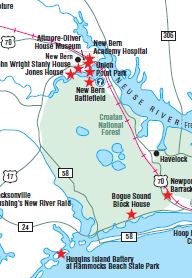
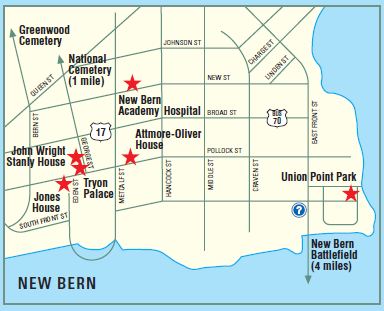

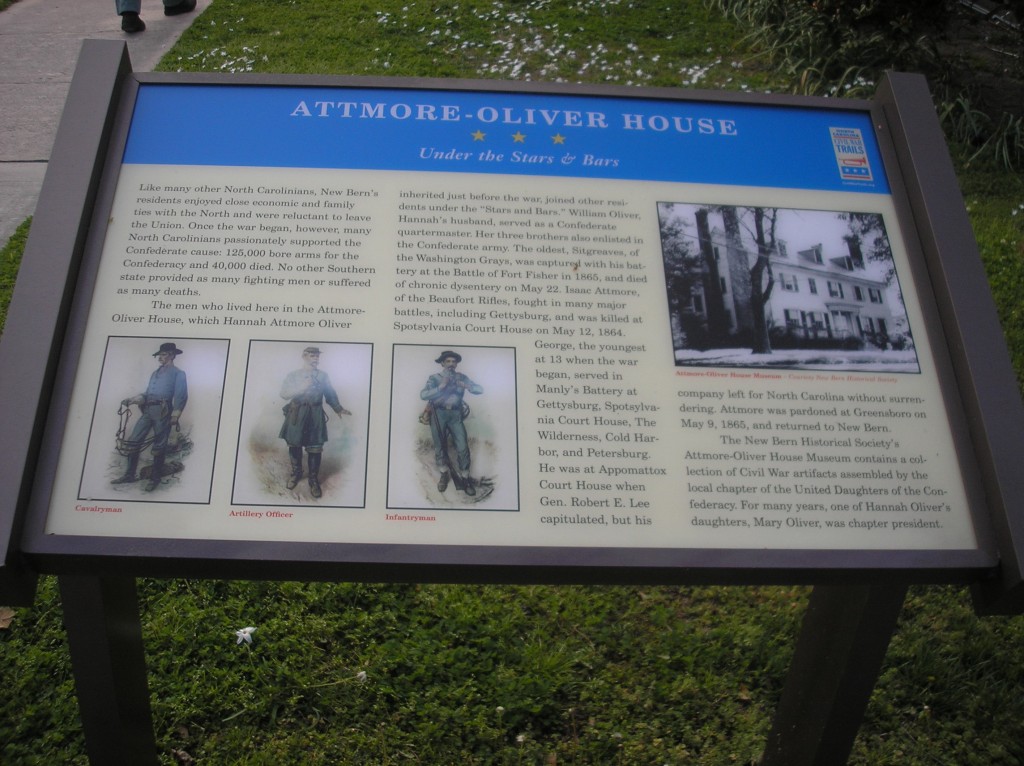

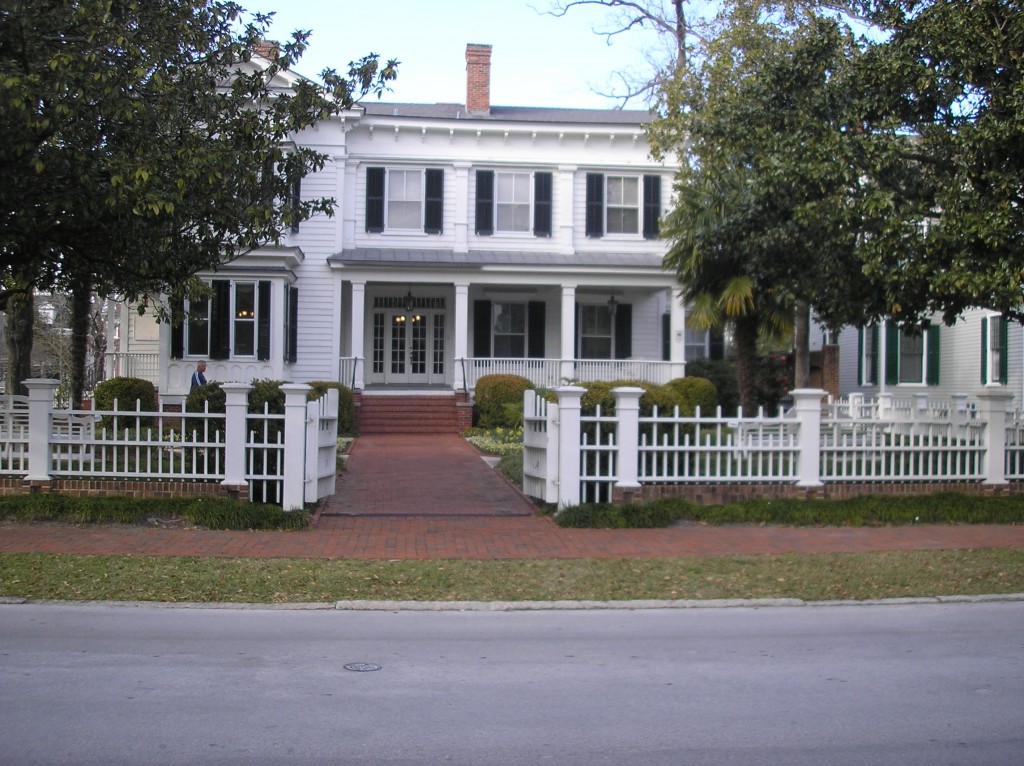
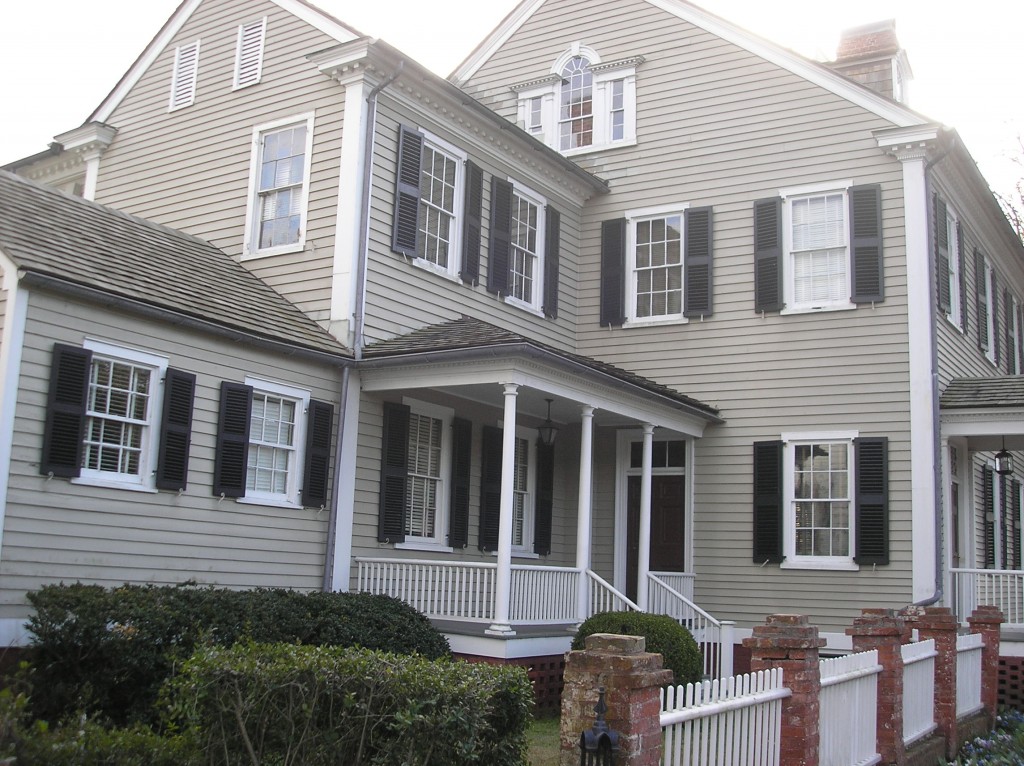
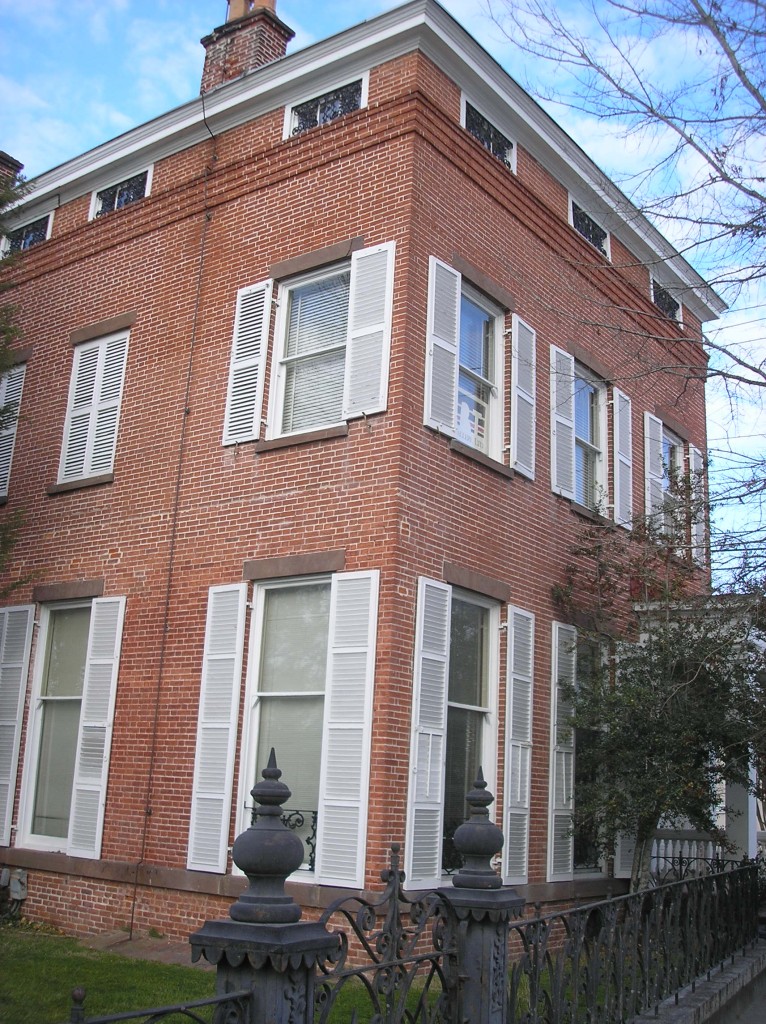


Thanks for your informative site.
My 2nd great grandfather died in New Bern on 26 April 1863, fighting in the Pennsylvania 58th. I have photocopies of the Muster Roll, the Casualty Sheet, and the Widow’s Pension File, all of which confirm this 1863 date. Yet what I can find of Civil War battles in New Bern is from March 1862. Do you know where I might find information about this latter battle? His name was William H. Vantine. Thanks.
William H. Vantine was my 3rd great grandfather. Here is some info re the 58th PA and the day William was KIA. He is the sole casualty they refer to in the 2nd paragraph. He is buried in New Bern:
On the 14th of March, the rebel General Pettigrew, with a heavy force of infantry and sixteen guns, attacked Newbern. Colonel Jones1 was in danger of being cut off and captured. Small reinforcements were sent to him, and by skillful dispositions and manoeuvring of his handful of men, he managed to keep the rebels at bay, who finally retired without gaining any advantage. But the enemy still continued to manifest much activity, and scarcely a day passed in which some portion of the regiment was not out scouting the country between the Trent and the Neuse. On the 15th of April two men of company I were captured by a party of rebel scduts. On the following day a brigade from Newbern, on its way to the relief of the Union forces at Little Washington, passed through the camp, and the Fifty-eighth was ordered out upon the Neuse Road for the protection of the right flank of the column in its passage of the river. In this movement the regiment encountered the enemy under General Ransom, and a sharp skirmish ensued, in which the loss was one killed and three wounded. Sending back to camp for a squadron of cavalry, the command bivouacked upon the field for the night, during which the enemy withdrew. Holding the position until the 20th, it fell back towards camp. At Cone Creek, on the Dover Road, it was again attacked by a considerable force of the enemy. The engagement lasted an hour and a half, the rebels giving ground, and finally withdrawing. The loss was seven wounded.
On 27th of April, parts of two brigades, commanded by Generals Palmer and Prince, consisting of the Eighth, Twenty-third, Twenty-fifth and Twenty-seventh Massachusetts, Ninth New Jersey, with two batteries and a small force of cavalry, arrived in camp, for the purpose of a demonstration upon Kinston. The force advanced in two columns, one led by General Palmer upon the railroad, the other by Colonel Jones by the Dover Road. Company G and two companies of the Twenty-seventh advanced as skirmishers. At Sandy Ridge skirmishing commenced, the enemy retreating to Gum Swamp, where the Dover crosses the railroad. Here he had a formidable line of breastworks erected across the junction, flanked on either side by an impassable swamp. Upon their arrival in front, the skirmishers attacked, but were soon checked by the fire of the enemy from his well sheltered position. As soon as the main body came up, dispositions were made, and after a sharp contest the works were carried. The loss in the Fifty-eighth was one killed. A few prisoners were taken, but most of the enemy escaped. The regiment immediately fell back to camp, and Palmer’s command to Newbern.
If you google “Skirmish at Wise’s Crossroads” you should be able to find the info you’re searching for. Good luck.
I would look in The War of the Rebellion: A Compilation of the Official Records of the Union and Confederate Armies (Washington, D.C., Government Printing Office, a multi-volume collection. These are available online; you’ll have to dig around, but I’d be surprised if you can’t find relevant information. I was interested in the Confederate campaign against New Bern from Jan. 28-Feb. 10, 1864, and found over 50 pages of reports from both Union and Confederate officers.